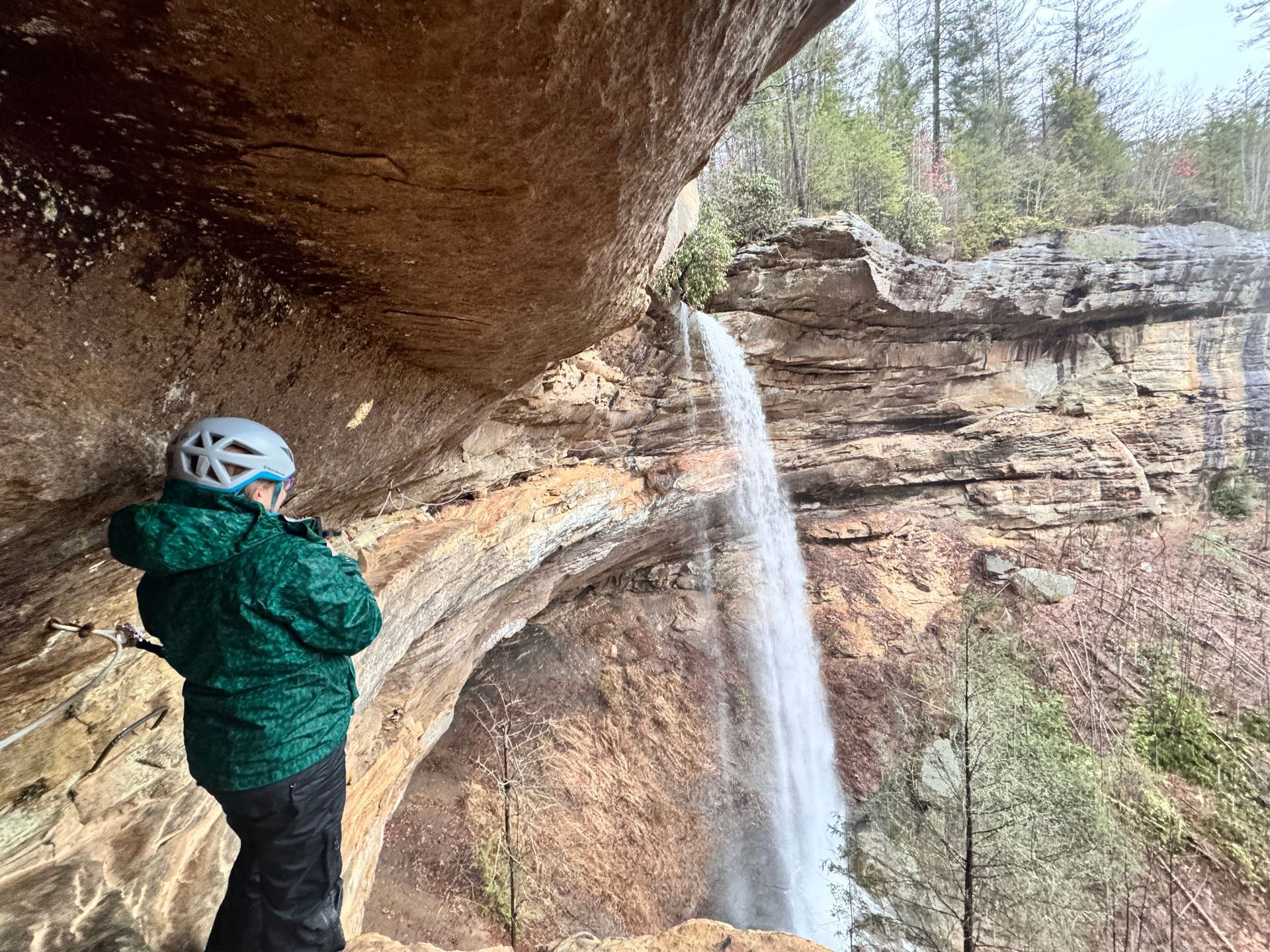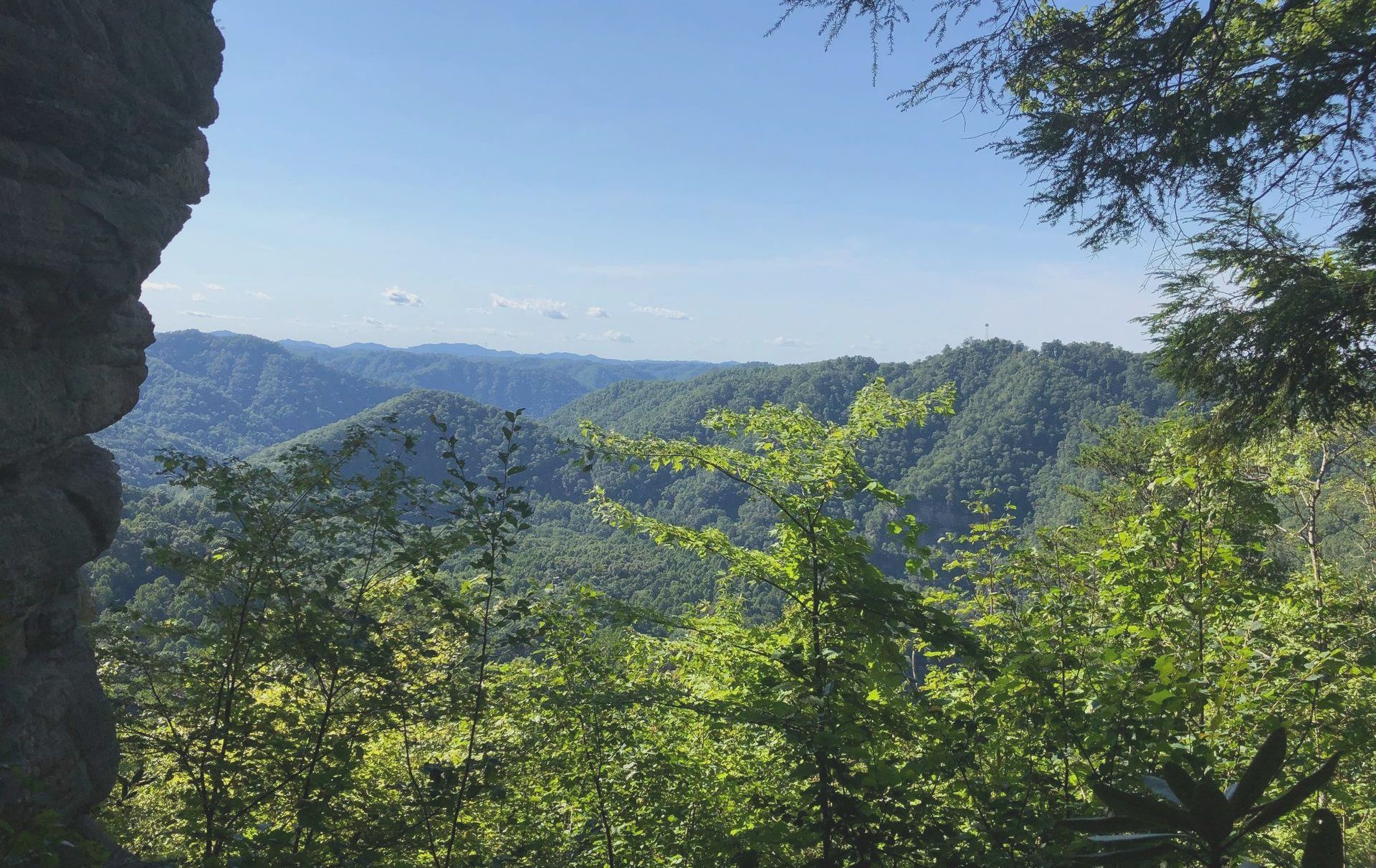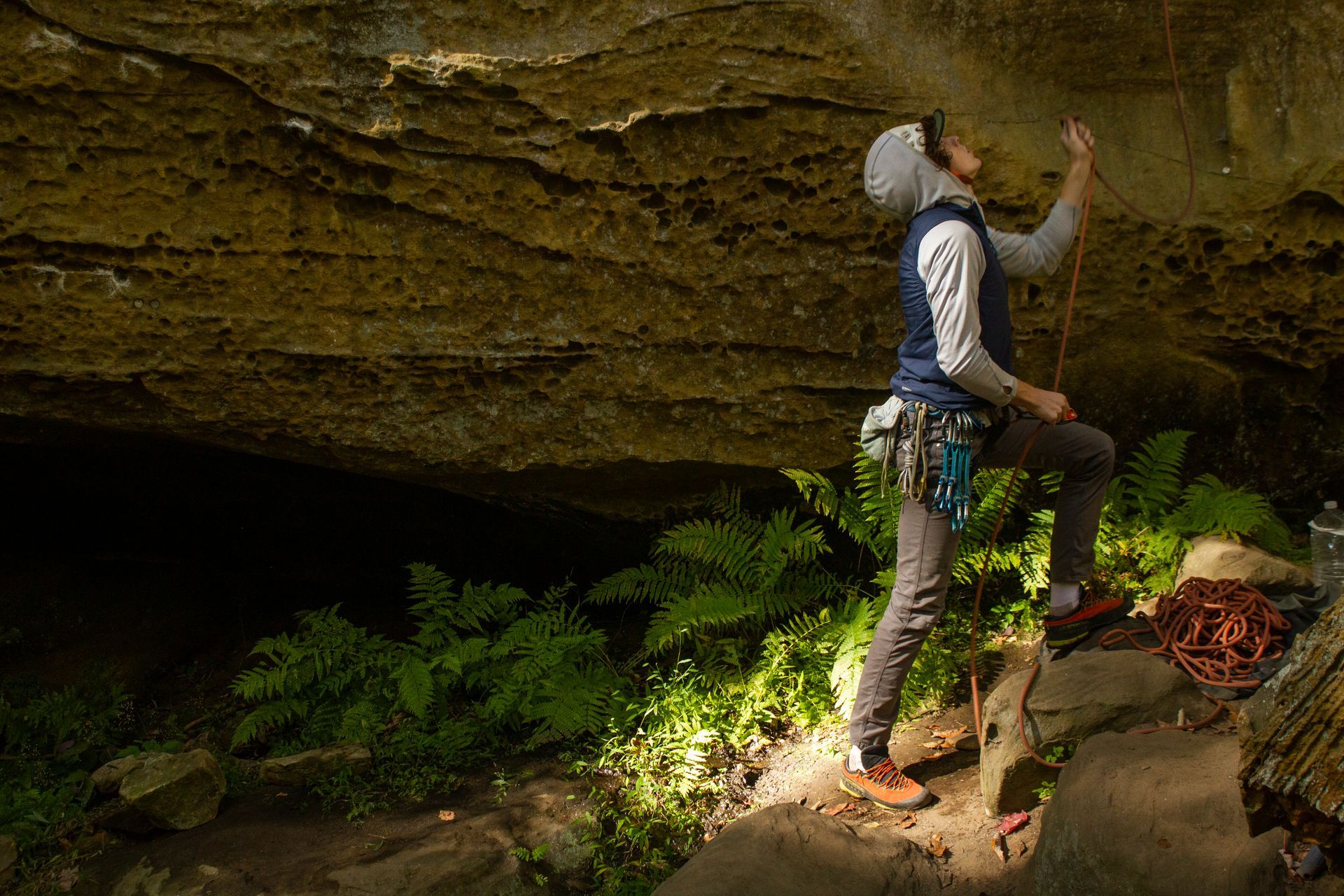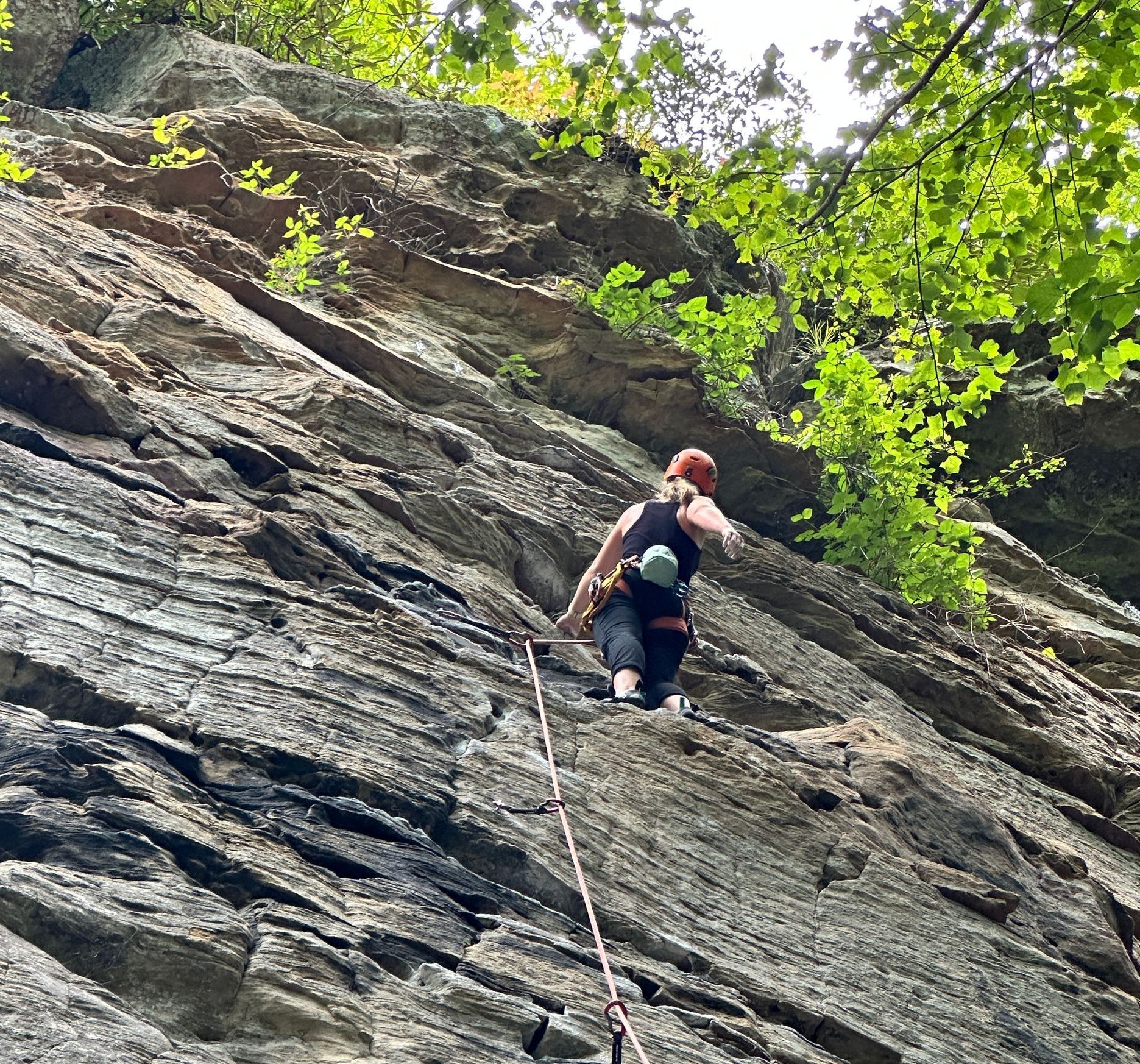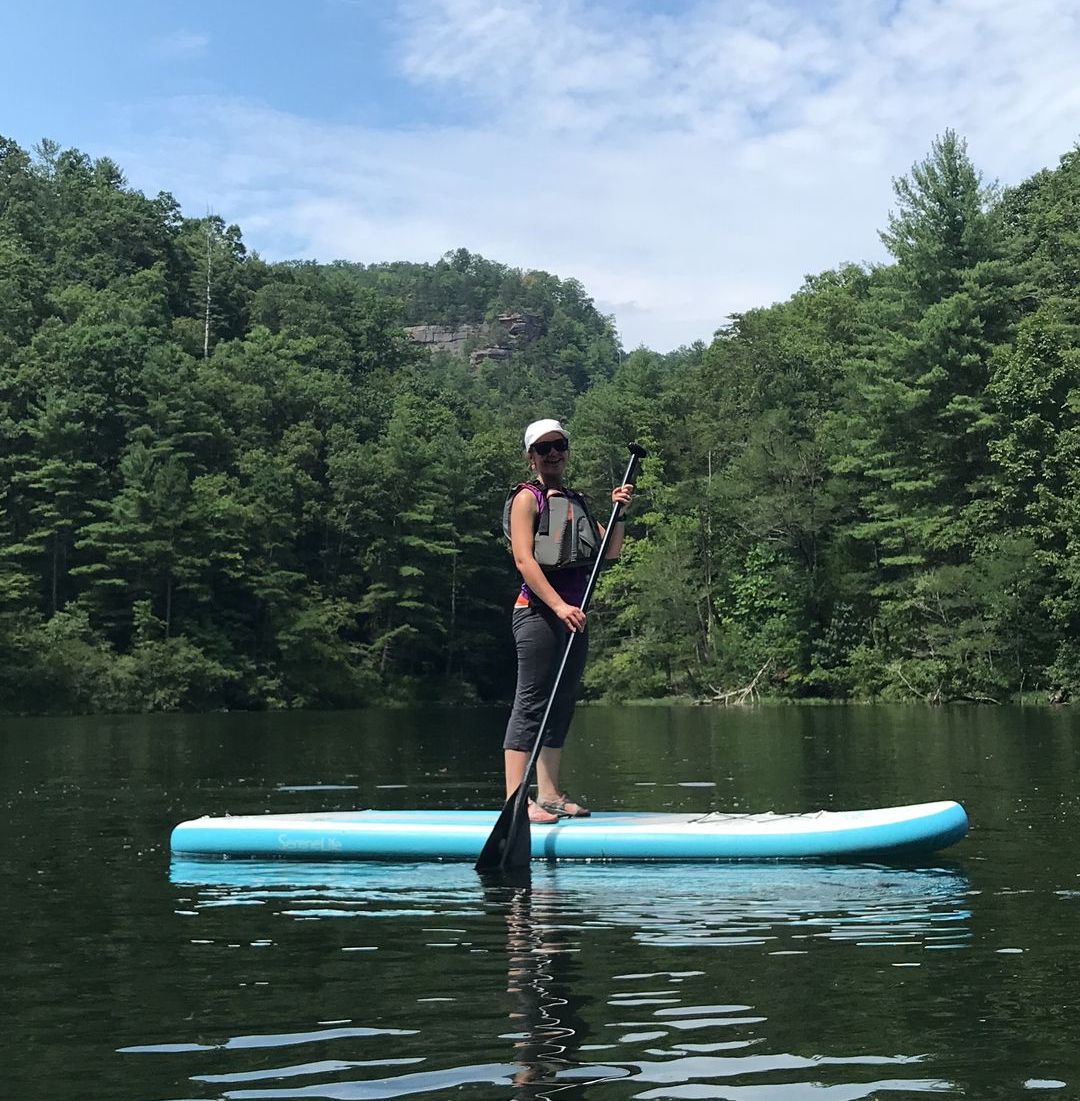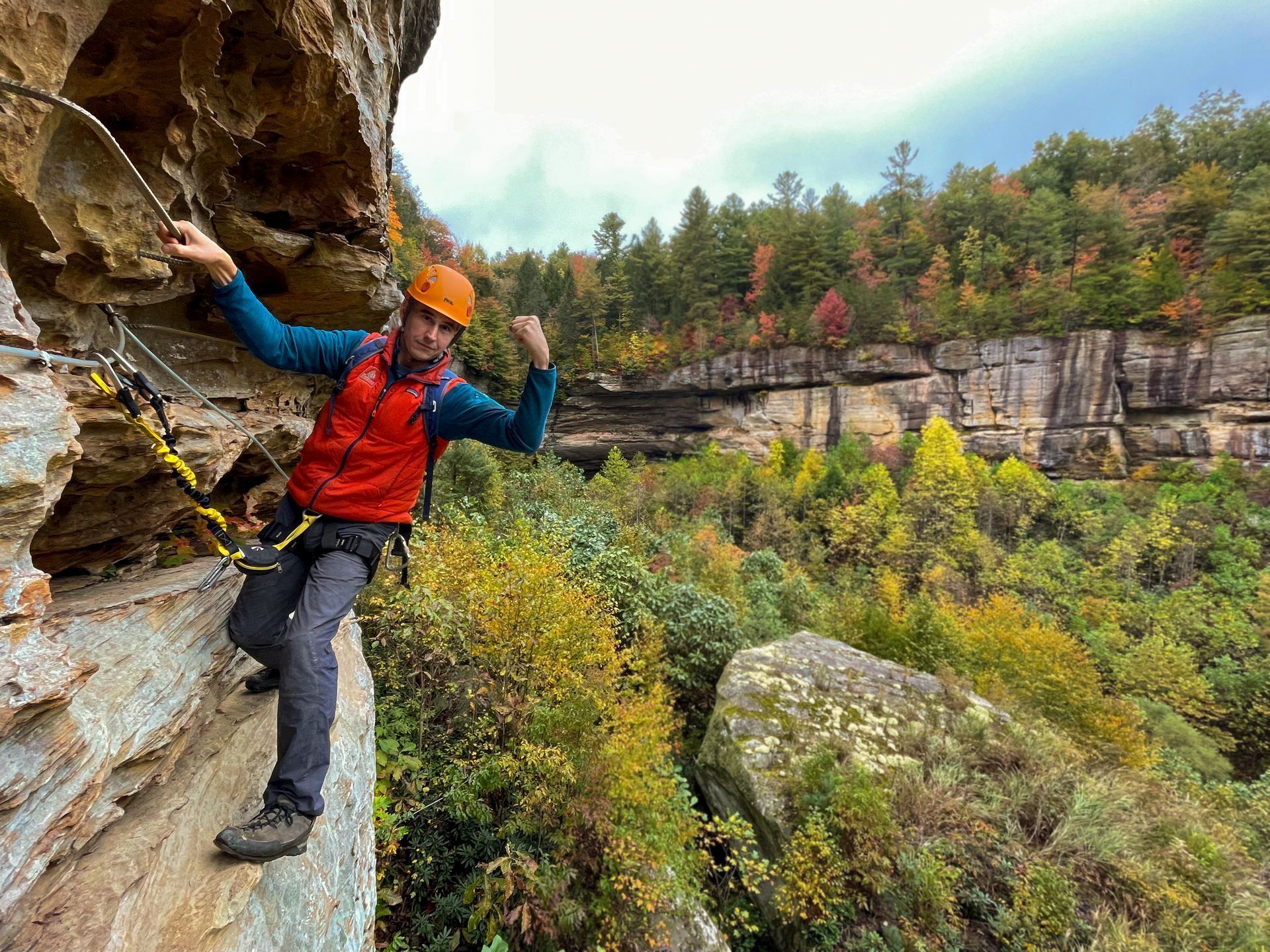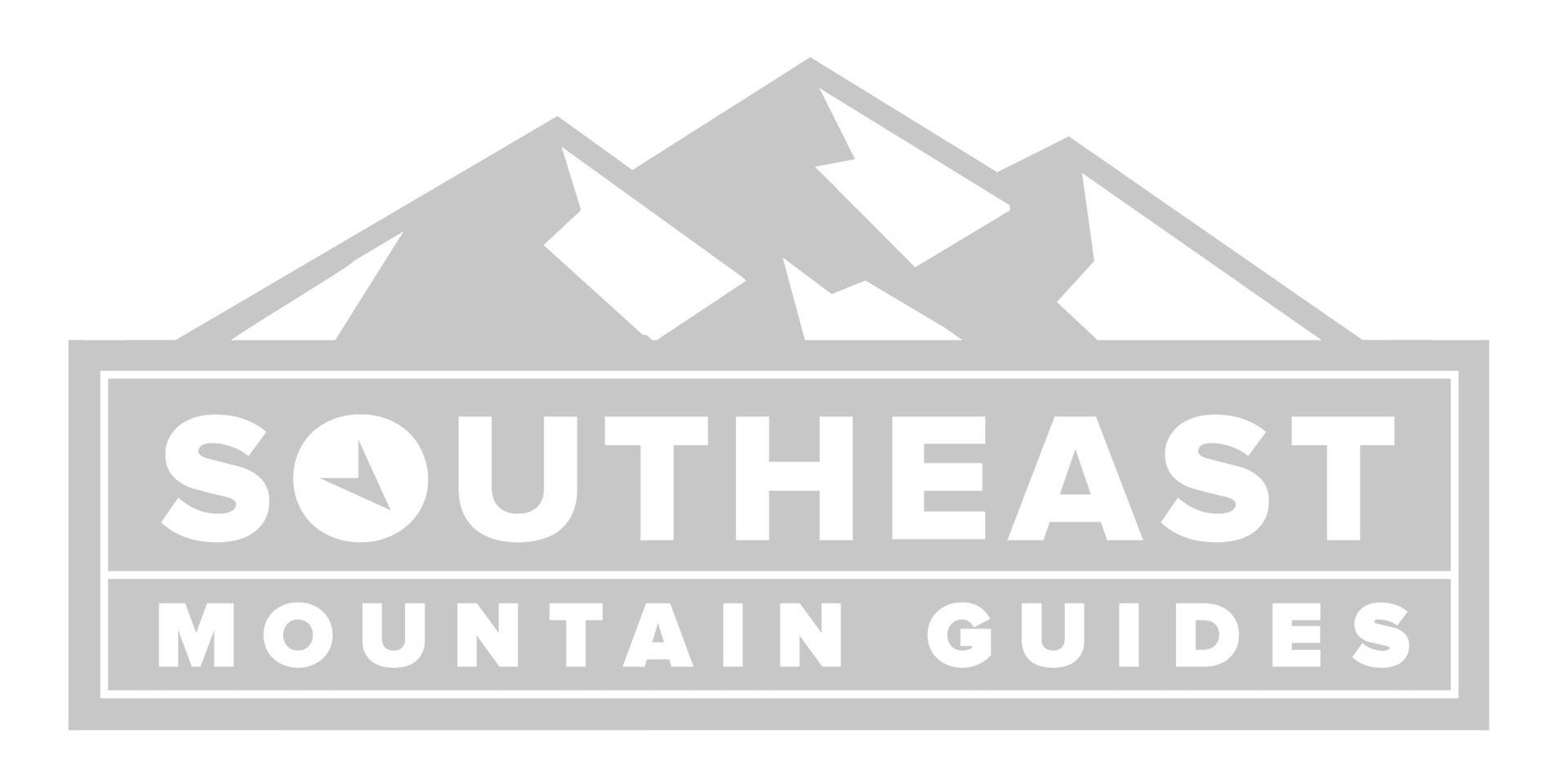Top 5 Gear Tips for Rock Climbing in Red River Gorge
Having the right gear can make all the difference on a climbing trip to the Red River Gorge. As climbing guides, we feel we have some insight into what will help make your trip a success. In this guide, we’ll cover the top 5 gear tips for rock climbing in Red River Gorge, ensuring a safe and enjoyable experience.
1. Stick Clip
This has to be our number one pick for climbing gear in the Red!
What is a stick clip?
A stick clip is a tool that lets you clip your rope through a quickdraw on the first bolt of a sport route without having to climb to the bolt first. One of the most common options is the Metolius Superclip, a simple attachment made of two wire loops that can screw onto a painter’s pole or other extension pole.
Why do we recommend a stick clip for climbing in the RRG?
There are several reasons:
- The first bolt on many sport routes here can be high, often 8 to 12 feet off the ground.
- Opening moves are often challenging, sometimes because the bases of popular climbs are eroded.
- Stick clips are also useful for projecting routes or bailing off a climb.
- Bonus uses: clearing spider webs on the approach trail or gently relocating a snake from the path! 😉
Where do you get a stick clip?
Many outdoor retailers (both online and brick-and-mortar) sell stick clips. The Metolius superclip is available as just the attachment, which can be handy if you’re flying in and then you can pick up an extension pole locally. Alternatively, brands like Trango Beta Stick offer complete stick clip kits, including the pole.
Locally,
Miguel’s Pizza and Climb Shop sell stick clips, as does
J&H Landmark in Lexington. If you’re climbing at
Muir Valley, they even have loaner stick clips available at the main parking lot pavilion—just be sure to return them!
Which stick clip should you purchase?
We’re big fans of the Metolius Superclip, but whatever you choose, look for:
- A minimum 12-foot extension (though greater extension is not uncommon).
- Durability.
- An intuitive way to clip and unclip draws from bolts.
2. Rope Bag
A rope bag or even a small tarp would be another top recommendation for climbing equipment in the Red River Gorge.
What is a rope bag?
A rope bag is a small bag that you can carry and store your rope in, with a built in tarp that you can roll your rope onto when in use. This will help protect your rope from dirt and moisture. Think of tent canvas in terms of light, water-resistant, durable, and pliable.
Why do we recommend a rope bag for the RRG?
The sandy terrain at most climbing areas in the Red River Gorge can quickly wear down your rope, and damp conditions at the base of routes are common. A rope bag provides a clean, dry surface to protect your rope, prolonging its lifespan and ensuring the continued performance of your belay devices, carabiners, and anchors.
Where do you get a rope bag?
You can get climbing rope bags from online retailers or local outdoor climbing such as a Miguel’s Pizza and Climb Shop in our area.
Which rope bag should you purchase?
The Metolius Ropemaster is a long-time favorite for its durability and ease of use. Look for bags with:
- A good-sized tarp.
- Cinch straps instead of zippers (zippers can break when exposed to dirt).
- A separate design from your climbing pack for versatility.
3. Belay Specs
Belay glasses are becoming an increasingly popular piece of climbing gear—and for good reason!
What are belay specs?
These are specialized glasses that allow the belayer to look ahead while seeing above. Think of eyeglasses with little prisms.
Why do we recommend belay specs?
These clever glasses reduce neck strain while belaying, allowing you to focus on your climber without discomfort.
Where do you get belay specs?
You can get belay glasses from online retailers or local outdoor climbing such as a Miguel’s Pizza and Climb Shop in our area. You may want to call ahead to check availability and variety if you are looking for a particular pair.
Which belay specs should you purchase?
Since their popularity has grown there are multiple options on the market. But here are some of our some purchasing considerations and top recommendations.
Purchasing Considerations:
When choosing belay glasses, consider:
- Price: Affordable options (around $30) are often sufficient and durable.
- Peripheral View: Glasses with good peripheral vision are safer and often preferred by those prone to motion sickness.
- Weight: Lightweight designs with minimal nose material are ideal, especially if you wear corrective glasses or sunglasses.
- Accessories: A protective case is essential, especially when storing belay glasses alongside the rest of your climbing gear. Neck straps are also highly practical, making it easy to take the glasses on and off, and they work seamlessly with helmets.
Top Recommendations:
Top recommendations include BG Climbing (affordable and durable), Pitch 6 (adjustable prisms), and Y&Y Vertical (multiple options including corrective or protective eyewear clip-on style).
4. Performance Climbing Shoes
The discussion of climbing shoes can become quite complex and particular. We will simply stick with some basics for this post.
What are performance climbing shoes?
For our purposes, performance climbing shoes will mean a climbing shoe that has a moderate to aggressive downturn in which toes are slightly or highly curled.
Why do we recommend these types of climbing shoes for climbing in the Red River Gorge?
This type of shoe mold will help to point and hook your toes onto pockets on the Red’s infamous steep climbing routes.
Where do you get performance climbing shoes?
Because you are looking for such a precise fit and your foot is unique it is best to get your climbing shoes from a local retailer. Miguel’s has a great selection in our area. You can also purchase climbing shoes online.
Which climbing shoes should you purchase?
Again because performance climbing shoes are so precise to your unique shoes, it is highly recommended to try them on and if you are able, try climbing or putting your toes and edges on climbing holds. Look for a fit with a moderate to aggressive downturned toe-box. Your toes should fit tightly, filling the toe box. The heel should also be snug, lacking the ability to slide off the back of your heel. The shoe should not be baggy around your heel but it also shouldn’t be digging into the back of your foot.
Insider’s Tip: Events like the
Rocktoberfest have shoe demos in which you can try out various brand’s models in the Red River Gorge.
5. Assisted Braking Belay Device
Although the standard for belay devices is becoming assisted braking devices, it is still an important piece of equipment that we feel should be on this list.
What is an assisted braking belay device?
A belay device is used by the belayer to manage the rope as the climber is ascending or descending a route. An assisted braking device is designed to help the belayer in the event of a fall by adding a braking mechanism.
Why do we recommend ABD belay devices for the RRG?
We recommend ABD (assisted braking devices) for the RRG for multiple reasons. Here are a few:
- Due to the nature of climbing in the Red, falls are common. An ABD adds a layer of safety.
- If the climber wants to get back to their last piece of protection after a fall, an ABD is very helpful as a progress capture.
- Rockfall is not uncommon in our area. If the belayer is hit by falling debris, an ABD can add some security.
Where do you get ABDs?
You can get climbing assisted braking devices from online retailers or local outdoor climbing such as a Miguel’s Pizza and Climb Shop in our area.
Which climbing assisted belay device should you purchase?
There are many well-recommended ABDs on the market and climbers have appreciated all the growth in technology. Here are a few to get you started in your research of the best ABD for you or your party.
We are happy to help! Sometimes climbing equipment recommendations can be overwhelming. Feel free to email or call us with specific questions. Equip yourself properly, enjoy the incredible routes, and make the most of your time in this world-class climbing destination!

